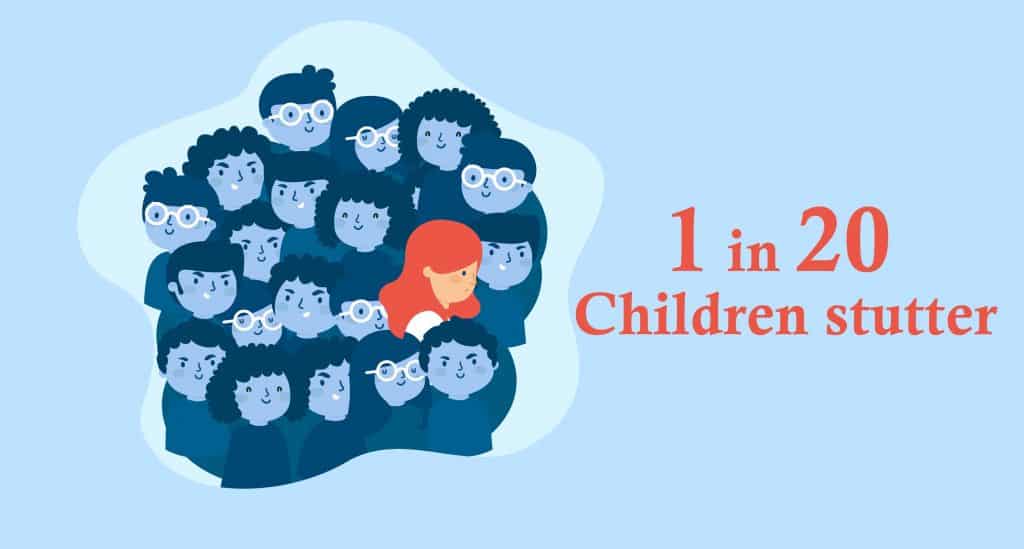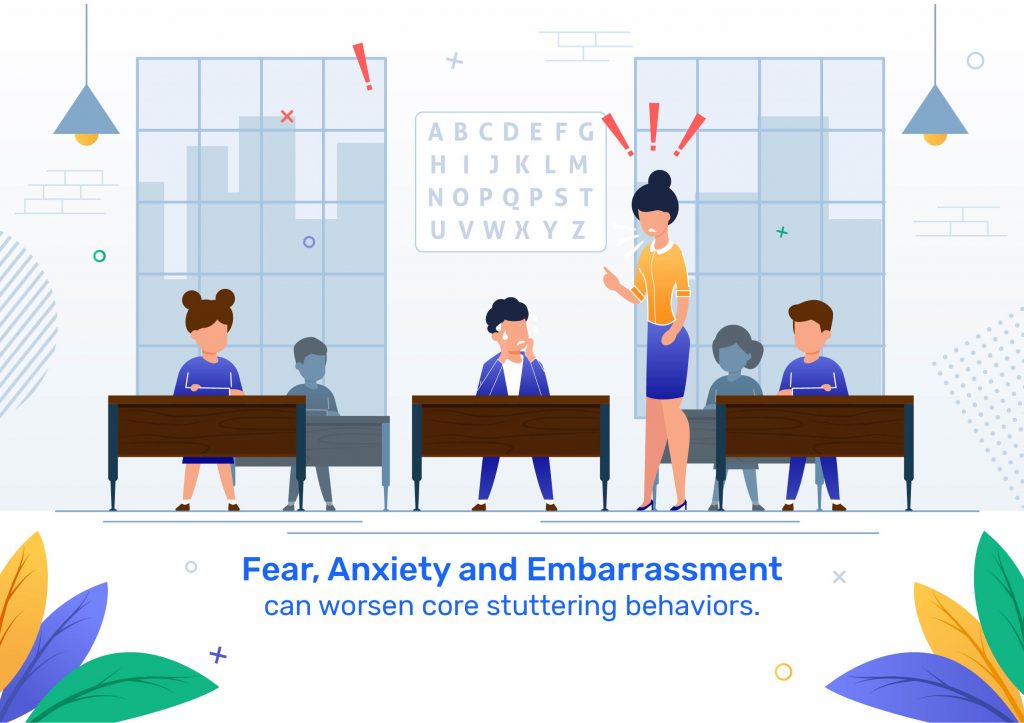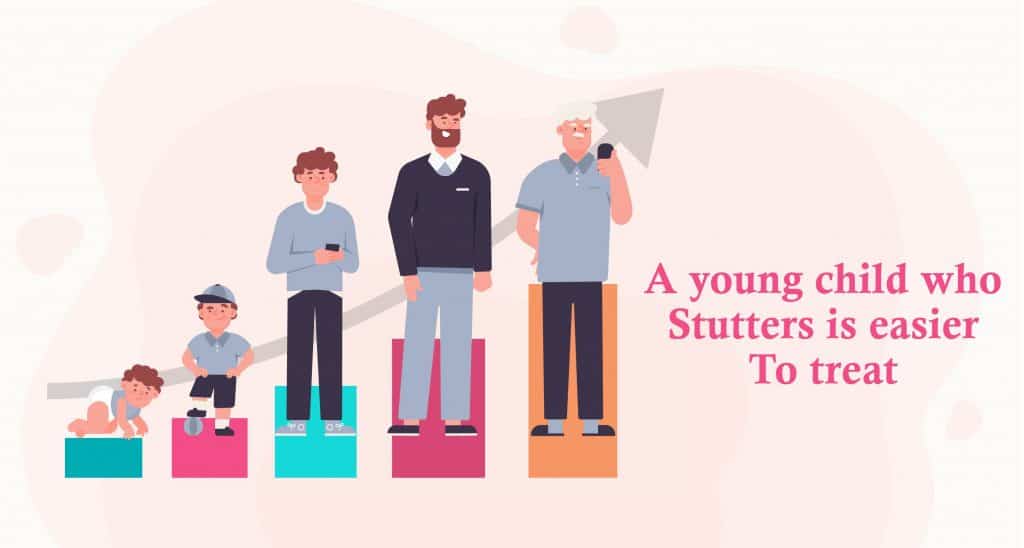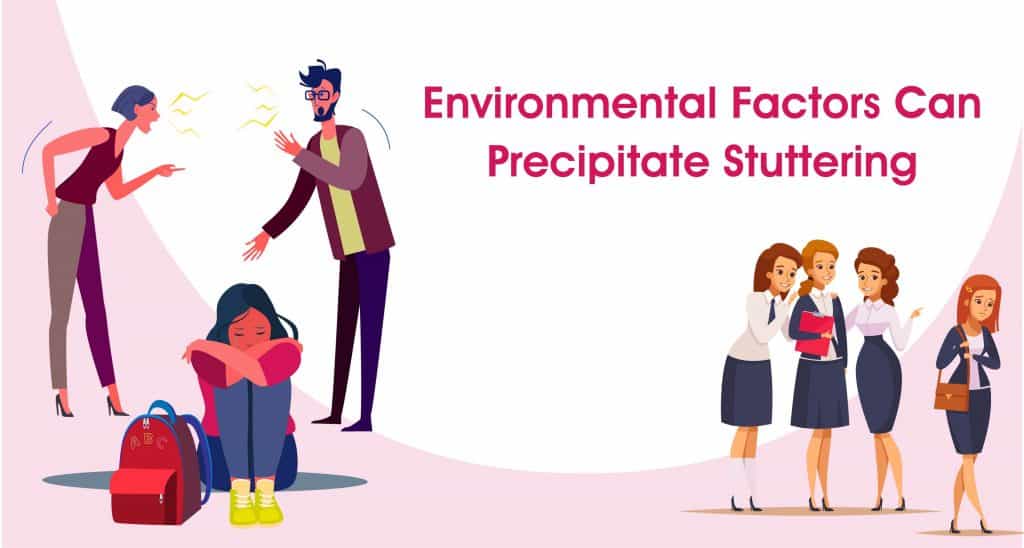Stuttering definition – in simple words
It is true that each one of us faces some form of disfluency while talking especially when facing a particularly stressful situation, fending off fatigue or speaking a new language. However, these do NOT qualify as stuttering or stammering.
Only when these disfluencies make it difficult for a person to express themselves and interrupts their flow of speech almost regularly does it become stuttering. Stuttering is when disfluencies disrupt the forward flow of speech due to their severity or high frequency.
Stammering prevalence

Stuttering is present all across the world, in all the cultures. We have prominent figures in world politics, researchers, physicians, authors and, even, singers, who stutter. Sadly, not all the factors that contribute to stuttering are currently known to the scientific community.
Close to 5% of everyone stutters at some point in life. However, the prevalence of stuttering has been estimated to be about 1% according to new research published by Craig et al. in 2002.
Stuttering core behaviours
Experts characterize stuttering by the unnaturally high frequency and/or prolonged stoppages in speech. There are three core behaviours one can find in the speech of people who stutter –
- Repetitions of sounds, syllables or monosyllabic words
- Prolongation of sounds
- Blocks or blockage of airflow in speech
Stuttering secondary behaviours
People who stutter often develop “management” tactics to bypass words they find difficult to pronounce. The secondary behaviour of those who stutter primarily consists of –
- Avoidance – entirely avoiding a word or syllable or consonant in the anticipation of stuttering. The person might use a synonym or avoid voicing his opinion/thoughts altogether if he or she anticipates stuttering.
- Escape – blinking of the eye, interspersing words with sounds like “uh,” or head nods that may help the person terminate a stutter. Escape behaviour can range from a simple blink to an elaborate twitch of the neck and facial muscles. Deciphering the escape behaviour of someone who stutters is incredibly challenging for the untrained eye.
Stuttering – Feelings & Attitudes

Emotions and attitudes are critical in stuttering. Depending on how the people around a child, who stutters react, the child can improve or show regression in their speech quality.
Those who stutter have difficulty in expressing their feelings and thoughts. Their stuttering can become worse, if they face recurrently negative reactions from their listeners. While fear, anxiety and embarrassment do not cause stuttering, these emotional reactions can worsen a person’s core behaviours of stuttering.
How does it start – when young 80% children recover.

In most of the cases, it is impossible to state when a child stuttered for the first time. However, research shows that environmental pressure and emotional distress can trigger a predisposed child to stutter. These environmental factors can include moving to a new neighbourhood, family discourses, losing a best friend or even bullying in school.
The incidence of stammering in children is about 5% although 75% recover without any professional intervention.
How is it different from normal disfluency?
According to Frieda Goldman-Eisler (1968), all normal speech shows some level of disfluency. People intersperse meaningful words with “umm”, “like”, and “uh”. While they do create disruptions in the normal flow of speech, people often resort to them for the want of a better word to express themselves.
Such disfluencies are incredibly common in people who don’t stutter, as well as people who stutter.
However, these disfluencies reduce the “naturalness” of the speech in people who stutter.
What causes stuttering – genetics, sensitivity of child

According to modern research (Van Riper, 1982), stammering is not a homogeneous speech disorder. In fact, speech pathologists and therapists now believe that it has an incredible heterogeneity.
However, modern methods of data collection and research have shed some light on the different factors that contribute to disfluencies in speech.
- Some children have family members (mother, father, or grandparents) who used to stutter. They might have a higher predisposition towards stammering than other children of the same age.
- Childhood stress might be another contributing factor. Children between the ages of 2 and 5 years are most vulnerable to stammering. This is the period when most childhood stresses make their presence felt. (Joining kindergarten, moving to a new neighbourhood or making new friends).
- The environment is another leading factor that can precipitate disfluencies in vulnerable children. Highly stressful environments like overly competitive households can contribute to stammering in toddlers.
Beginning stuttering in adulthood
Stuttering in adults is less common than it is in children. It can begin suddenly in adults, who have never stammered before, with no familial history of speech disfluencies. In such cases, it is known as late-onset stuttering or acquired stuttering.
Here are the four reasons why stuttering may develop in adulthood –
- After an emotional trauma or psychological stress – although very rare, psychogenic stuttering occurs in people who have experienced sudden emotional setbacks or psychological trauma. PTSD can precipitate sudden speech disfluencies in adults who have no history of stammering.
- Physical trauma to the head – accidents, falls, and even cerebral strokes can result in neurological damage in the speech centres of the brain. There can be damage to the neuronal networks responsible for transmitting messages to and from the speech processing centres. Direct trauma to the brain and concussions can cause a person to stutter. Surgery and/or medication in relevant cases can reduce the severity of some forms of neurological stuttering. Neurodegenerative diseases like Alzheimer’s and Parkinson’s can also contribute to speech disfluencies among adults.
- Stuttering due to a medication – pharmacogenic stuttering is not rare among cases of acquired stuttering. Several medications can cause adults to stutter suddenly. Sometimes, changing the dose of a particular drug can also lead to speech fluency challenges. In such cases, stopping the consumption of the pharmaceutical compound or adjusting its dose can relieve or reduce stuttering almost immediately.
- Idiopathic causes of stuttering – in many cases, doctors, speech therapists and specialists cannot decipher the exact reason of stammering that occurs suddenly during adulthood. However, there’s no need to give up home just because the cause is unknown. SLPs can still help you re-acquire some level of fluency through regular speech exercises. Therapy may even help you identify the root cause and enhance your fluency over the next few weeks.
Stuttering in adulthood can be concerning, especially if you work in a position where you have to deal with company communications or customer assistance. In such cases, it is better not to hide your condition, but to speak with the management. Seek help from your lawyer, check the medical policy of the company you work with and make an informed decision about your future. Stuttering is no reason to quit your current job, especially, if the work environment is accommodating and supportive.
Managing and treating stammering: speech therapy
Stuttering can vary in severity (on a scale of 1 to 10, 10 being most severe) irrespective of the person’s age. On one hand, the professional therapy takes into account the severity of stuttering, and the age of the individual in question, on the other they consider the clinical methods or approaches that can work best for the individual.
In the case of children, stuttering can begin at the age of just 18 months. Most children are unaware of their speech impediments and they do not develop a negative attitude towards their speech disfluency or any secondary behaviours. Speech therapists often find it easier to treat children and cure them of stuttering with a higher rate of success as compared to adolescents and adults.
In most cases, adolescents already have strong negative feelings associated with stammering. These feelings stem from the ridicule, condescension and, even, anger they face while growing up with a stammer. It is not enough to offer speech therapy, but SPLS also need to provide emotional support and necessary counselling that can help them overcome their escape and avoidance behaviours.
Treating stammering in adults is often the most challenging since they have fully developed core and secondary behaviours, along with a slew of negative emotions that come with stammering. It is a long journey towards fluency for the adult and their SLPS that focuses not only on their disfluency, causes of stammering and the triggers, but also ameliorating the negative emotions that accompany stammering at a matured age.
Currently, there are hundreds of recognized speech pathologists, who follow their most-trusted methods for the treatment of a stuttering.










